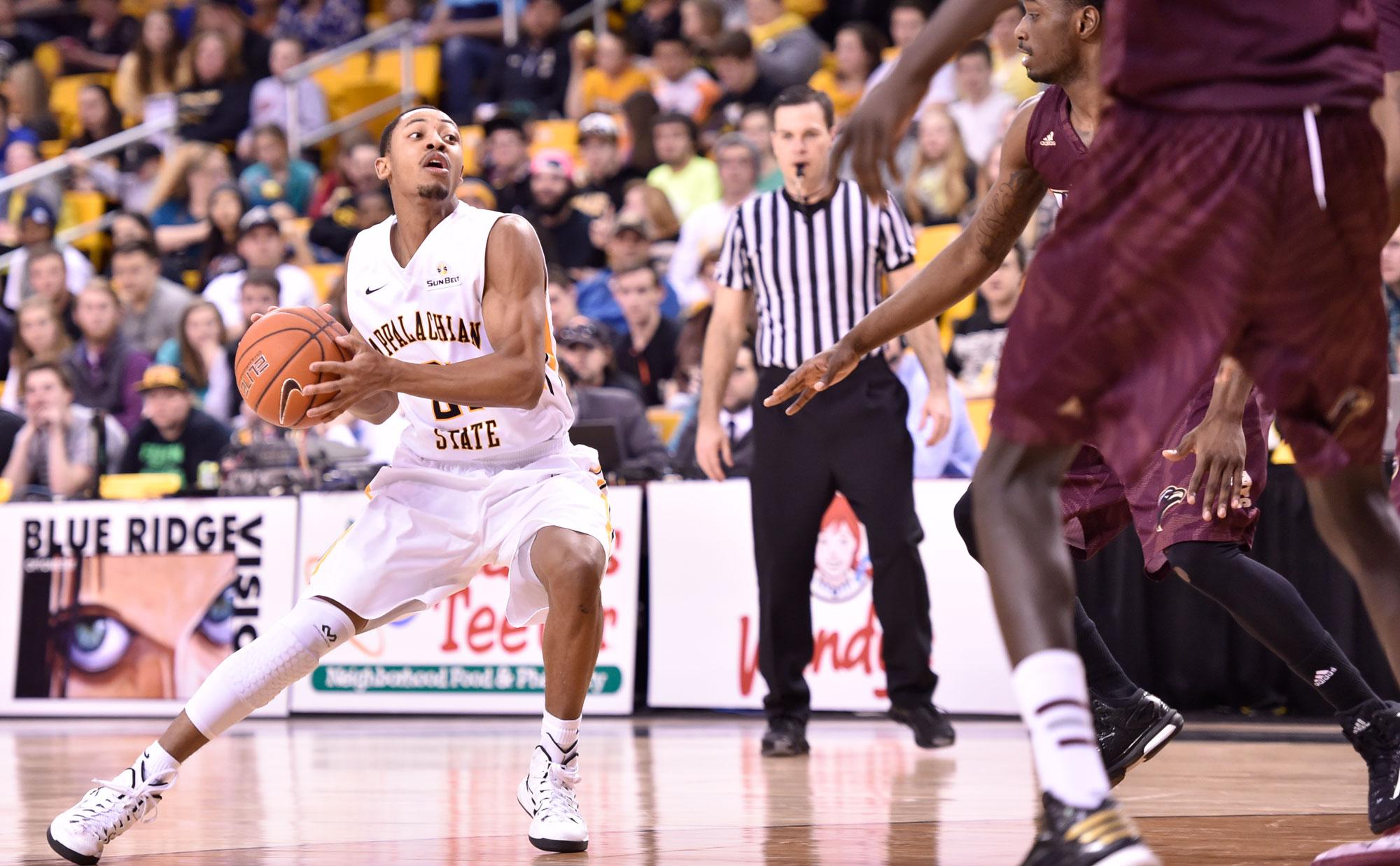Frank Eaves likes to shoot the ball – a lot. Just stay after any Appalachian State basketball practice and you’ll find Eaves, hoisting up shots until the managers make up some kind of excuse to go home.
That’s Eaves though. A scorer. A shooter.
After last season’s breakout campaign, which saw the then-junior guard post 16.6 points per game and earn All-Sun Belt honors, it’s no secret that Eaves is the best offensive player on the team. Eaves was labeled a scorer, and coming into this season, he sought to expand his role.
“I think not only do I have to score, I have to facilitate and get everyone the ball,” Eaves said back in November. “That’s what I worked on over the summer and ultimately that should make us a better team.”
Despite what he worked on over the summer, it’s not working. While his assist per game average has increased from last seasons 1.7 to 2.4, the increase isn’t large enough to significantly alter the outcome of a game.
Another number that has increased — and is obviously altering games — is his field goal attempts per game. This season, Eaves averages 13.9 attempts a game, compared to 12.4 last season. While only an increase of about one and a half shots a game, that’s roughly two possessions that could have ended in an assist by Eaves, or any other player for that matter.
A state that is more telling than Eaves’ field goal attempts per game are his total field goal attempts so far this season. Of the Mountaineers 850 shots this season, Eaves has attempted 209 of them, or 24.5 percent. That means that a quarter of all offensive possessions that result in a field goal attempt have ended with a shot by Eaves.
The next two Mountaineers on that list? Wingplayer Ronshad Shabazz and guard Chris Burgess with 134 and 87 attempts, respectively.
While it is not uncommon for a team’s most gifted offensive player to take the most shots, it is alarming when the consensus second and third options have only taken 11 more shots combined than Eaves has the entire season.
Despite the shot disparity between Eaves and his teammates, Burgess said the shots the senior guard is taking isn’t a case of refusing to share.
“Frank is having a hell of a season, and when you have a hot player you have to go to him. We run through the system but the shots he takes are within the offense,” Burgess said.
Burgess is correct in his observation regarding Eaves’ season. This season he is averaging 20.2 points a game on 44.5 percent shooting, and 43.5 percent shooting from three.
However, the numbers disagree with the observation that Eaves is working solely within the system. Only two players, Eaves and Burgess, are averaging at least two assists per game, averaging 2.4 and 2.1, respectively. In a system that relies on ball movement, this seems to be an extremely low number. The Mountaineers are only averaging about 11 assists a game as a team, something that is rearing its head in the win-loss column.
“We could always share the ball more,” Shabazz said. “There have been games when we had less assists than we should have. When we share the ball we win games.”
At 3-12 the Mountaineers could certainly afford to win a few more games.
If Frank Eaves isn’t getting his looks off of passes within the system as Burgess mentioned, then he has to be getting them in 1-on-1 situations or off-the-dribble, something he excels at.
If you watch the above clip, you’ll notice that the majority of Eaves’ points come off of the dribble, a skill he excels at. His ability to get his own shot is something that’s highly coveted, especially in the college game.
However, despite all his talent at scoring the ball, it is far easier for an opposing team’s defense to limit one player, especially when they know he won’t pass.
At the 17-second mark Eaves is leading a fast break with Burgess on the right wing. Eaves is able to freeze the defense with a dribble move before dishing it to Burgess for the open 3-point shot.
Typically he would look for his own shot, which in this case would have ended with a contested layup, but was able to make the correct play by finding his teammate for the open 3-pointer, an easier shot in this situation.
Sequences like the one just described show the potential of what the offense could be with Frank at the helm. Fox has a stable full of capable shooters, and with the opposition focusing on Eaves, the opportunity should be present for Eaves to find the open man regularly.
What’s more is that should Eaves look to involve his teammates more, it should open up the court for his own scoring looks. By involving his teammates early, he will manage to alleviate some of the defensive pressure on himself by forcing the opposition to respect his teammates and his ability to find the open man. This should create more open looks for Eaves down the stretch, something he hasn’t seen recently.
Eaves needs to begin to distribute the ball more in the coming weeks. If he can find his teammates more open looks, and should they be able to knock them down, he will find himself in a much easier position to score. With wins being at a premium, there is no excuse not to start sharing the load in order to work towards the greater good.
Story by: Lee Sanderlin, Associate Sports Editor

